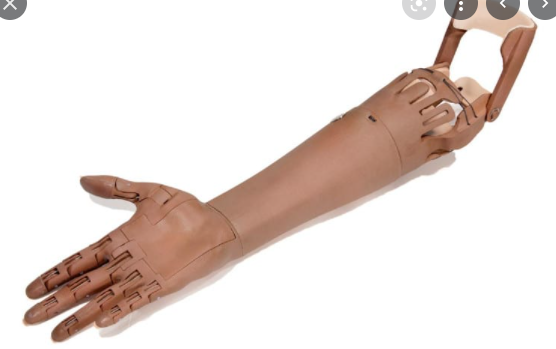
Truelimb Robotic Arms Look Real and Cost Less Than Traditional Prosthetics
The cost of prosthetics ranges from $2,000 for a simple finger to well over $50,000 for more complicated limbs. Karon Bryson Emmert's mother calls it "the most costly toy box in the neighborhood" because so many of Annika’s prosthetics ended there. Check more information about Missouri prosthetic leg
Once the stump is reconstructed, the prosthetist will create a permanent prosthetic arm. LimbSpecialists.com provides a step-by–step guide for creating an artificial limb. The Hero Arm's most striking feature is its lower cost than similar devices. The prosthetic will cost approximately PS5,000 ($6,980 USD), which makes it incredibly affordable when compared to the exorbitantly-priced bionic arms.
She was born without much of her right hand, so she received prosthetics very early.
Klaus Schwab: Young People Hold The Key To Creating A Better Future
A new prosthetic leg may cost from $5,000 to $50,000. Even the most expensive prosthetic legs can withstand three to five years of wear. This means that even high-end limbs will have to be replaced every few years. The suspension system holds the prosthetic limb to the body. In the case of a harness system straps, belts, or sleeves are used for attaching the prosthetic device.
A prosthetic device that allows amputees to type, touch, and use a computer mouse may be available for arm and hand amputees. They won't even have to sell their house. New manufacturing techniques could mean that prosthetics will be more affordable and available sooner for more children. Annika Emmert purchased her prosthetic arm at Limbitless. She shows how it reacts to nerve impulses, flexing openly and closed. Low-cost 3D printing, which isn't weight-bearing and affordable, will have the greatest impact on prosthetic arm costs. This would make them a great option for children. These modular arms can be set up in many ways, including at the wrist, elbow, or shoulder joints. These prices are only for the wrist and hand components.
Are Prosthetics Expensive?
A surgically implanted thoughts-actuated arm that is attached to the nerves of the disabled can cost as high as $6 million. This is the price of a prosthetic arm.
7. Maia 2010 g. The company is still exploring materials and machine learning algorithms. They are also seeking researchers and amputees to join their project. EMG, or electromyography, is a method that measures the electrical activity of skeletal muscles by attaching electrodes to the skin or inserting into the muscle. Shang states that current EMG-based prosthetics need "great concentration" from the user in order to make the device move. Brain Robotics uses 3D scanning to create custom sockets. Qiao says that the amputee places his arm in the scanner. The machine then creates a digital model of the remaining leg and makes a socket that can be used without any modifications.
The Power Foot One works by several thousand times each two microprocessors, six sensors, and adjusts ankle position, stiffness and power. Prosthetic hands can be used to aid those who have lost their hand function or appearance. Basic prosthetic hands can be used as cosmetic replacements for the function of a normal hand. Innovative electric prosthetic hands, on the other hand, have fully articulated fingers. Brain Robotics will sell the device at a price of $3k-5k, where similar devices can cost anywhere from $40,000 to $60,000 Limbitless is funded by donations. This, along with its low-cost manufacturing methods, is a major factor in the company's ability to sell lower-cost limbs. Even for prosthetics manufacturers, the cost of individual components is a major expense. If those costs are reduced, it will reduce overall costs.
A man who suffered severe electrical shock to both his arms received experimental thought-controlled arms for $6 million. Register to comment
As we all know, prosthetics is a branch of medicine that deals with the creation and use of artificial body parts. Scientists and researchers made great strides in robotics research by successfully testing robotic prosthetics. A signal is sent to the hand when you contract a muscle. Individual finger movements can create different grasp patterns. Brain Robotics' custom product designs enable seamless contact between the sensors in the socket and residual limb to ensure optimal signal detection. Brain Robotics believes that the 3D-printed prosthetic is more comfortable and will be worn for longer periods. Once the stump size is stable, the patient can meet again with the prosthetist.